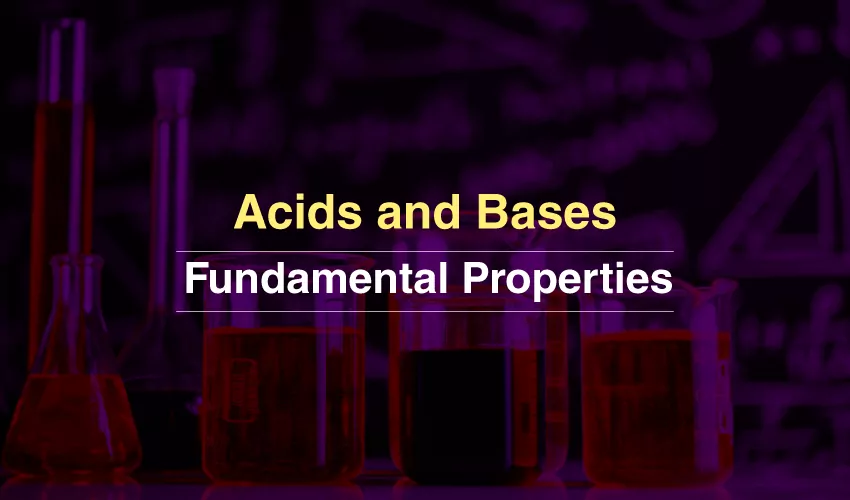Acids are chemical compounds that have a sour taste in an aqueous environment, and they have an affinity towards turning blue litmus red. Bases, on other hand, are chemical compounds that have a bitter taste and are slippery to the touch. Some bases are water-soluble, while others aren’t.
Acids have a sour flavour to them. It forms H2 when it reacts with metals, and salt, carbon dioxide, and water when it combines with carbonates. In this article, we will learn more about the acid properties and base properties.
Properties of Acid and Bases
Physical Properties of Acid and Bases
| Properties | Acids | Bases |
| Colour | Mineral acids are colourless liquids. However, impurities in sulphuric acid can cause it to turn yellow. Certain organic acids are solids with white colour.
Examples: benzoic acid |
Bases are colourless, except for the hydroxides of iron and copper. |
| Taste | Sour in taste | Bases are bitter |
| Solubility | They are soluble in water | Certain bases are soluble in water |
| Touch | Nil | Slippery in nature |
The Chemical Properties of Acids and Bases
- When a metal reacts with an acid, hydrogen is usually displaced from the acid. Hydrogen gas is formed as a result of this process. The metals generate salt when they react with the residual acids. For instance, consider the reaction of sulphuric acid with zinc.
The metal reacts with alkalis (water-soluble bases) to form salt and hydrogen gas. For instance, the reaction of zinc and sodium hydroxide.
- Salt, carbon dioxide, and water are produced when metal carbonates/metal bicarbonates react with acids. For instance, sodium carbonate/sodium bicarbonate reacts with hydrochloric acid.
- Salt and water are produced when metal oxides react with acids. For instance, consider the reaction between copper oxide and weak hydrochloric acid.
- Salt and water are produced when non-metal oxides react with bases. For instance, consider the reaction between carbon dioxide and lime water (calcium hydroxide).
- Bases are good conductors of electricity and have a pH of more than 7.
- Strong bases, such as sodium hydroxide, are ionised in water to create hydroxide ions.
- When an acid and a base are combined, neutralisation occurs – the reaction between the acids and bases neutralises the acid and base qualities. When acid and base are mixed, salt and water are formed as a result of the process. For example, when NaOH interacts with HCl, the result is NaCl and H2O, and the salt is NaCl in this case.
Note
There are a lot of commonly used inorganic and organic reagents in chemistry. When the magnesium metal reacts with alkyl or alkenyl halides, it produces a grignard reagent. They’re also powerful bases that react with acidic hydrogens (such as alcohols, water, and carboxylic acids). The reaction of magnesium metal with alkyl or alkenyl halides produces this reagent.
Summary
Acids, bases, and salts have a great role in chemistry as well as our daily lives. Acids have a sour flavour, bases have a bitter taste, while salts themselves have a salty taste. Salts are formed when acids and bases react with a variety of chemical substances. Vinegar (acetic acid), citric acid (found in oranges and lemons), and tartaric acid (present in tamarind) are examples of naturally occurring acids. In addition, our stomach creates hydrochloric acid, which participates in food digestion. Baking soda and toothpaste are two popular bases. It is a basic substance used to clean the teeth and prevents tooth decay by neutralising excess acids in the mouth.

